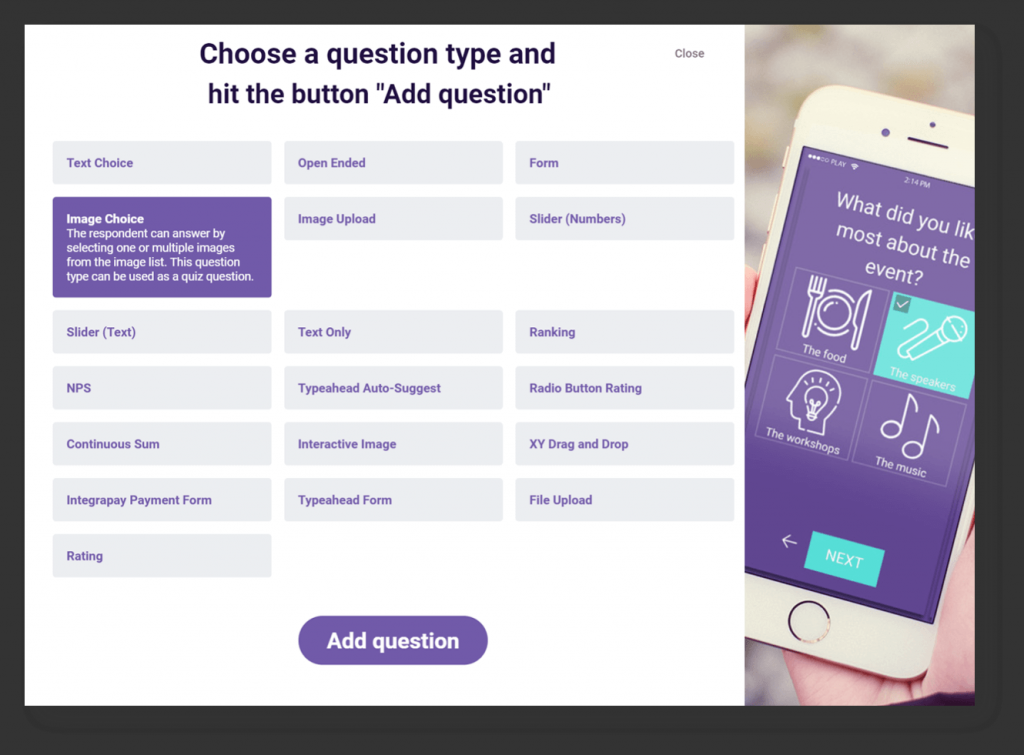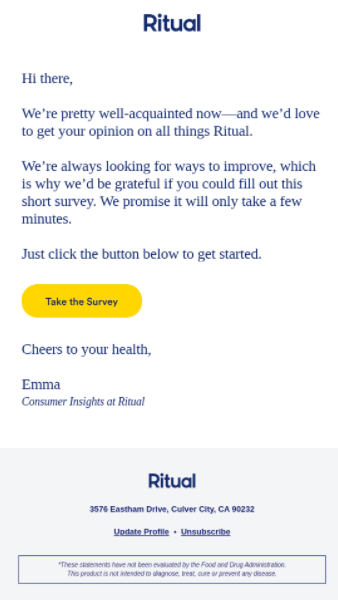What is customer retention?
Customer retention refers to the ability of a business to retain a customer over a certain period of time. High retention rates mean that customers are willing to continue purchasing your product repeatedly, whereas low customer retention rates indicate that your customers are churning.
Customer churn often signals that your customers no longer see value in your product, or that they’ve found a better alternative of it.
Why is customer retention important?
There are a few reasons why you should care about retaining your existing customers:
- Retaining existing customers is 5-25 times cheaper than acquiring new ones
- The better you take care of your customers, the more likely they are to become loyal to your brand
- Loyal customers have a higher lifetime customer value (LCV)
- Loyal customers act as brand ambassadors and often bring in new customers through positive word-of-mouth recommendations
- Loyal customers are more understanding and forgiving when it comes to bad customer service experiences
- Loyal customers tend to spend 67% more than new customers
- The Pareto Rule: 20% of your customers make up 80% of your revenue
As you can see, your existing customers can be very influential, and hold a great purchasing power. Many businesses have realized this and created a customer-centric culture in their organizations. As a result, they’ve seen an increase in revenue, customer satisfaction, and retention.
How do you measure customer retention?
To measure customer retention, you will need to identify 3 pieces of information:
- The number of customers at the end of the period that you’re measuring (E)
- The number of new customers acquired during that period (N)
- The number of customers at the start of that period (S)
To calculate your customer retention rate, use the following formula:
Customer Retention Rate = ((E-N)/S)*100
5 strategies to increase customer retention
Now that you know how to measure customer retention, it’s time to start implementing retention strategies into your daily workflow. Here’s how:
1. Invest in a CRM system
A CRM (customer relationship management) software is a great tool that all businesses should use to improve their customer retention and satisfaction. Using CRM gives you a competitive edge because it allows you to provide a more personalized and knowledgeable service to your customers.
What is a CRM System?
A CRM system is a software that stores all the important data that you’ve collected about your customers. In essence, it allows you to build customer profiles that contain the customer’s contact information, geolocation, language, timezone, past purchases, as well as past communications with your business.
How can CRM help with customer retention?
Using a CRM can improve the quality of your customer service, and in turn improve customer satisfaction and retention.
Whenever you’re chatting with a customer in real-time, whether it’s through live chat or the phone, it’s important to have access to their customer profile. A CRM system does exactly that, gathering all client communication in one place. By seeing all their past inquiries, tickets, and purchases, you can get a better understanding of what they’ll need from you, and thus be able to provide more knowledgeable service, which is what customers appreciate most.

In fact, 33% of customers hate having to repeat themselves when it comes to resolving their queries, and over 86% of customers are willing to pay more for a superior customer service experience. It’s no longer enough to have a great product. Customer service plays a huge part in the decision-making process of a customer and makes all the difference when it comes to retaining customers or losing them to the competition.
2. Get to know your customers
First and foremost, the question that every business owner in pursuit of loyal customers should ask themselves is “how well do I know my customers?” Is it just some hypothetical customer persona that we came up with overnight, or are we really connected with our customers?
To provide your customers with the best possible service, it’s important to personalize all aspects of their buying experience. From email marketing to live chat support, segmentation and personalization go a long way when it comes to customer retention.
To get to know your customers better, try to answer the following questions:
- What are the demographic and psychographic features of your target audience? Use surveys to get to understand your audience better. Or search through social media to get to know the people who are using similar products. Social listening tools such as Mention and survey tools such as Pointerpro are a great advantage here.
- What are your audience’s concerns and what do they desire the most? Talk frequently with your sales and support teams and figure out what concerns your customers the most and how you should address these with your content.
- What’s your customers’ journey like? Take time to determine when your customers start interacting with you in the first place and how this relationship develops. Create a customer journey map so that you’d know how to support your customers with your content throughout their journey with you. Most of the times, people rely on others’ reviews to decide if they can trust you. Online reputation management, especially regarding Google reviews, is an important issue. Jonas Sickler’s guide on removing bad (or fake) Google reviews is a great help here.
Customers don’t want to feel like just another number in your sales funnel. They want to feel special and appreciated for entrusting your business with their company, money, and time. So how can you make them feel valuable?
The best way is to segment customers into groups with similar interests to provide them with relevant and personalized offers. Here’s how you can do it:
- Make use of AI technology to determine what products they might enjoy based on their previous purchases
- Personalize all aspects of email or text marketing — from subject lines to body text
- Address customers by their name whenever they initiate any contact with your company and have their CRM profile ready so you’re aware of their latest actions (purchases, queries)
- Send out product and service satisfaction surveys after the customer completes a purchase
3. Engage your customers and ask for feedback
No business can survive without its customers. Therefore, it’s important to monitor customer relationships and react proactively if customers are displaying behaviors that are indicative of churn.
There are two main ways to monitor customer relationships:
- Through surveys and assessments
- Through analysis of usage trends and behaviors
Surveys/Assessments
Probably the most important step if you want to retain loyal customers, is to ask for feedback. Customer feedback will help you define and improve your marketing strategy.
Consumers are highly demanding creatures, who will certainly have an opinion about how they were approached or want to be approached. If you set customer feedback surveys in place, you can ask specific questions in every step of the customer journey.
Make sure to ask the right customer feedback questions, and avoid survey fatigue. So don’t make your survey too long. You can, for example, ask 1 small pop-up question on exit intent. You can also send out a customer satisfaction email. Such a campaign will not only help you to improve your marketing strategies, but also enable you to develop better products. Here are tips on how to motivate your audience to get the right feedback.
Taking advantage of customer satisfaction surveys that measure NPS (Net Promoter Score), CES (Customer Effort Score), and CSAT (Customer Satisfaction) is a great way to monitor customer engagement.
Answers to these surveys are a pretty good indicator of customer churn and retention because:
- NPS indicates whether your existing customers would recommend your product or service to others
- CES indicates whether your customers have to put in a lot of effort to purchase or use your product
- CSAT indicates whether your customers are satisfied with the overall experience that your company is providing

If you notice that your loyal customers are becoming detractors and are less satisfied with your product, you need to act quickly to prevent them from churning. You can do so by scheduling a one-on-one call or an in-person meeting to discuss how your product can be improved, and how it help your customers achieve their business goals.

4. Understand why existing customers are leaving in the first place
Usage trends and behaviors
Just as customer surveys, studying customer behavior can be a pretty good indicator of customer satisfaction and retention. For example, if your product is a software, and you notice that your customers are logging into it less frequently, it could mean that they no longer think it’s valuable. Perhaps they don’t see value in the product because it’s not bringing them any results, or perhaps they’ve found an alternative software solution (cheaper, better support, more scalable) that they’re planning to migrate to. Or if you sell your products online, things like poor customer delivery experience may drive down your sales.

Regardless of the reason, you should act proactively to see if you can do anything to change the customer’s mind. Perhaps you can provide training on new feature updates, showcase how the product can help them achieve their goals, or provide discounts and extra support. In essence, anything you can do to prevent the customer from churning should be done.
On the other hand, identifying positive trends can also help with customer retention. By identifying spikes in usage, you can predict when your customers will require extra support. Perhaps they have a big deadline ahead of them and will require more assistance than usual when working with your product. By having your staff ready to assist your customers quickly, you’ll only reinforce your company’s image as a reliable software provider.
In turn, this will improve brand loyalty and customer retention.
5. Reward your most loyal customers
We’ve mentioned the Pareto rule briefly — 20% of your customers make up 80% of your sales. So why not reward these valuable customers and treat them as VIPs? Customers love nothing more than being taken care of at all times (not only when they have problems with your products or services.)
To ensure your most valuable customers are taken care of at all times, assign them a designated customer success manager. The role of the manager should be to check in weekly, monitor your customer’s usage, and ensure that your products help them achieve their business goals.
In addition to that, you can reward your most valuable customers with loyalty perks such as early-bird access to new features, discounts, or even by applying credits to their accounts that can be used towards their monthly subscription bill. If you really want to stand out from other vendors, don’t forget to send holiday greetings and presents to their office.
Small acts of kindness like this really make a difference for your customer relationships, loyalty, and retention.
Key takeaways
Customer retention is closely tied to your customer’s satisfaction with your products and service. To keep your customers satisfied, you should get to know them, their habits, and their goals so you can help them achieve them. If you do, your customers will remain loyal, attain a higher lifetime customer value, and act as brand ambassadors.
To conclude, here is a two-minute video of Pointerpro’s Digital Marketer on how collecting customer feedback can skyrocket your lead generation and turn more leads into satisfied customers.



